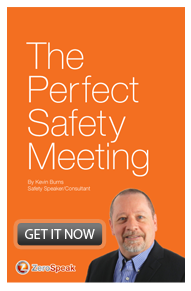The high-performance, respected safety managers of tomorrow must improve in three key areas today.

Safety managers, safety supervisors, safety officers, safety advisers, safety personnel, foremen, crew chiefs, human resources personnel - it doesn’t matter the title. If you have a hand in managing the company safety program, you are a safety manager (one who manages).
Bill, a safety manager, says often, “if you had tried to tell me twenty-five years ago that I would be doing safety one day, I would have said you were nuts.” That’s because twenty-five years ago, Bill was a teacher; an educator. Taking the skill set of a teacher (presentation skills, mentoring, engagement and coaching), Bill was able to learn the safety part and use his skill set to communicate it in a way that made sense to others.
Reading from the OH&S Code and reading from a lesson book is essentially the same function. As an educator, you would have to be able to take what is in the text book and to put it into plain language that anyone can understand.
“It used to be that the guys who got hurt on the job ended up becoming the safety managers. There’s no way they could do that today,” Bill said.
And he’s right. The skill-set of an effective and respected safety manager is more than just an ability to quote chapter and verse from the Code. It’s more than enforcing rules, writing procedures, passing certifications or running safety meetings. If you want to get respect as a safety professional, you have got to improve in three key areas:
1Presentation skills - face it, your presentation skills suck. Don’t argue with me because I am right. Maybe, if you can carry an entire presentation of 45 minutes that is coherent, articulate, inspiring, engaging and has some humor - and you can do it without notes or PowerPoint and bring the whole thing to making your people want to be better in safety, then maybe I’ll cut you some slack and admit that I am wrong. But I know I’m not. Just because you know how to get 17 lines of text on a single PowerPoint slide doesn’t make you a good presenter. PowerPoint slides don’t engage or inspire. People do. If you want respect in your presentations, read this book: Resonate by Nancy Duarte. It’s expensive to buy and it’s the best book on presentation skills ever written (take it from a guy who makes his living doing presentations). It will take you lots of time to read it and to get good at it. But there’s a reason for that. No one ever gets respect for taking shortcuts. Do the work and get good at presenting.
2One-on-one coaching - players don’t get better from team meetings. They get better when the coach addresses individual parts of their performance and gets them to make small tweaks and adjustments often. That means you have got to get good with your players everyday. And let’s leave out the philosophical discussion about who should be talking with front-line workers. If the front-line worker’s supervisor doesn’t have the skills to be able to coach the individual workers, then coach the supervisor and the players until the supervisor develops the skills. Also, read this book, The Five Minute Coach: Improve Performance Rapidly by Lynne Cooper. It’s 20 bucks and it’s designed for leaders, managers and supervisors, in any setting - that includes safety. It’s a book designed to develop coaching skills overall - not just in safety. Read the book and change your mind about how to communicate with your people.
3Speaking Gen-Y - in 2015, 75% of the North American workforce is going to be over the age of 50 or under the age of 30. That’s next year. That means that in increasing numbers, sixty year-olds will be working alongside twenty year-olds. You are going to have to manage the safety program in a way that both age groups comprehend. So you had better get real good at figuring out what makes Gen-y tick and what Baby Boomers respond to. To help you with tomorrow’s workforce, read this book, Y-Size Your Business: How Gen Y Employees Can Save You Money and Grow Your Business by Jason Ryan Dorsey. Gen Y is the fastest growing segment in the US workforce—and now comprises the entire 18 to 32 demographic. If you want to slow down your turnover and attrition, you’d better get good at relating to your fastest growing market.
Read the books. Do the work. Earn the respect. When you have their respect, they will follow you and buy-in to the safety program. That will drop your incident rates quickly and slow down your turnover and attrition. The high-performance safety managers of tomorrow must improve their presentation skills, coaching and understand their employees today.



